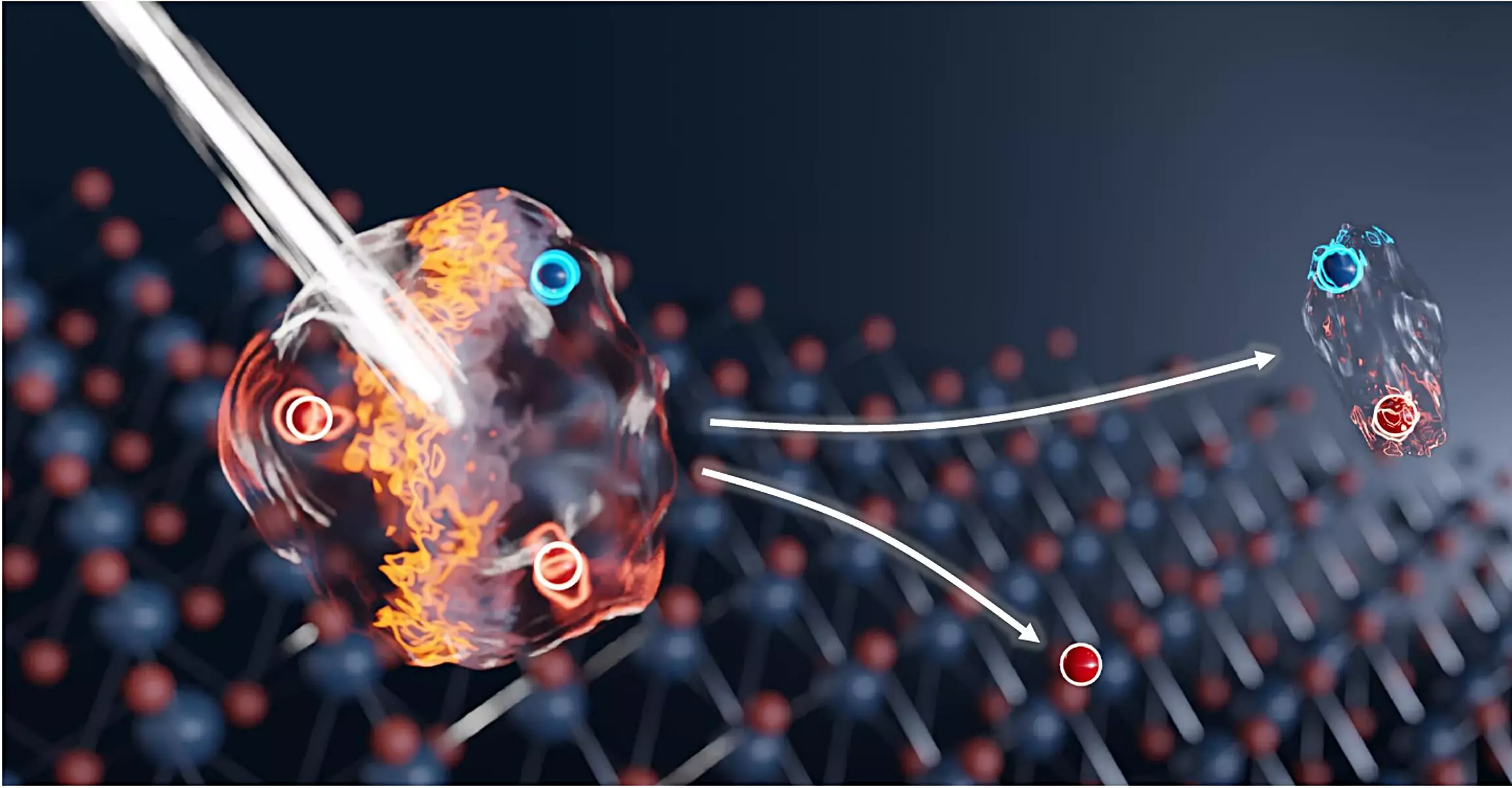The field of quantum technologies and electronic applications is undergoing a revolution, primarily driven by the exploration of extremely thin materials that consist of only a few atomic layers. Researchers from TU Dresden, in collaboration with Helmholtz-Zentrum Dresden-Rossendorf (HZDR) and international partners, have recently achieved a significant breakthrough. This remarkable advance centers around the rapid switching behaviors of luminescent particles within a two-dimensional material, marking a potential transformation in optical data processing and flexible detection systems.
Two-dimensional (2D) materials differ tremendously from their bulk counterparts, showcasing unique physical properties due to their reduced dimensions. These materials facilitate the generation of excitons—bound states formed by electrons and holes—far more easily than traditional materials. When energy is absorbed, an electron is displaced from its position, leaving behind a positively charged hole. The attraction between these opposite charges leads to the formation of excitons. Furthermore, when an additional electron interacts with this exciton, trions are formed, which have unique characteristics that combine electrical charge with strong light emission capabilities.
The interactions and transitions between these excitonic and trionic states present tantalizing possibilities for advanced applications, particularly in electronics and photonics. Scientists have long envisaged the potential of these interactions as a controllable switching mechanism, though previous attempts had limited success regarding switching speeds.
Breakthrough Experimentation
The pivotal research project was orchestrated by Professor Alexey Chernikov of TU Dresden and Dr. Stephan Winnerl of HZDR, with contributions from institutions across Marburg, Rome, Stockholm, and Tsukuba. This transnational collaboration leveraged state-of-the-art technology at HZDR, specifically utilizing a Free Electron Laser (FELBE) to deliver intense terahertz pulses. The experimental setup involved carefully exposing a layer of molybdenum diselenide—a prominent 2D semiconductor— to these terahertz pulses after laser-induced creation of excitons.
This intricate setup allowed the researchers to induce a rapid transformation where trions reverted back to excitons in a staggering few picoseconds—roughly a thousand times faster than previously achievable methods. By strategically timing the application of terahertz frequencies, they could effectively break the tenuous bond between an electron and exciton, thereby triggering a rapid cycle of formation and reformation.
This research not only demonstrates a crucial advancement in understanding exciton-trion dynamics but also opens up an array of opportunities for future investigations. The ability to manipulate excitonic states with high-speed precision paves the way for extensive applications across different electronic states and material systems, potentially leading to innovative functionalities in quantum computing and information processing.
The implications extend beyond theoretical physics, as the demonstrated switching mechanisms could serve as a foundation for the development of novel devices. For instance, the potential to create advanced optical modulators capable of rapid switching could significantly enhance data-processing speeds and efficiency. These devices could also yield remarkably compact components that seamlessly integrate electronic and optical information transfer.
Applications in Sensor Technology
Aside from data processing applications, this research heralds promising prospects for sensor technologies as well. Detecting and imaging terahertz radiation, which falls between microwave and infrared wavelengths, presents challenges that current technologies often struggle to address. However, with the new methodologies showcased in this research, there could be the potential for developing highly sensitive terahertz detectors that operate across a broad frequency range.
This could lead to innovations such as terahertz cameras endowed with numerous pixels that provide fine imaging capabilities. Such advancements could be valuable in various sectors, including telecommunications, medical imaging, and enhanced security measures, where high-frequency detection is paramount.
The collaborative efforts of the research team have not only charted new territory in the behavior of 2D materials but have also provided a broader window into the future of quantum technology applications. As researchers continue to build on these initial findings, the pace of innovation in photonics and electronics is likely to accelerate, marking an evolutionary step toward more efficient, compact, and multifunctional devices.
Overall, the findings published in Nature Photonics underscore how advances in understanding material sciences can ultimately reshape technological landscapes, with the echoes of these research endeavors expected to resonate across multiple scientific fields for years to come.


Leave a Reply